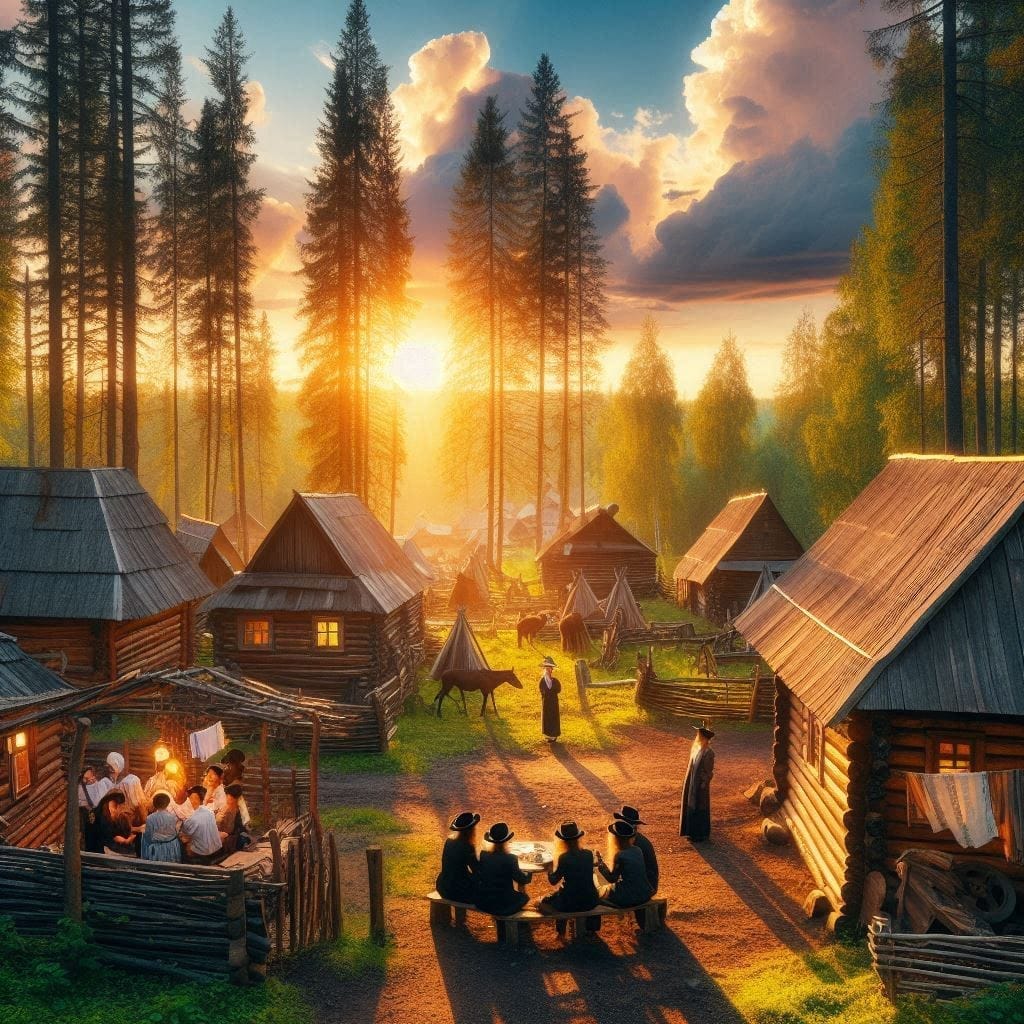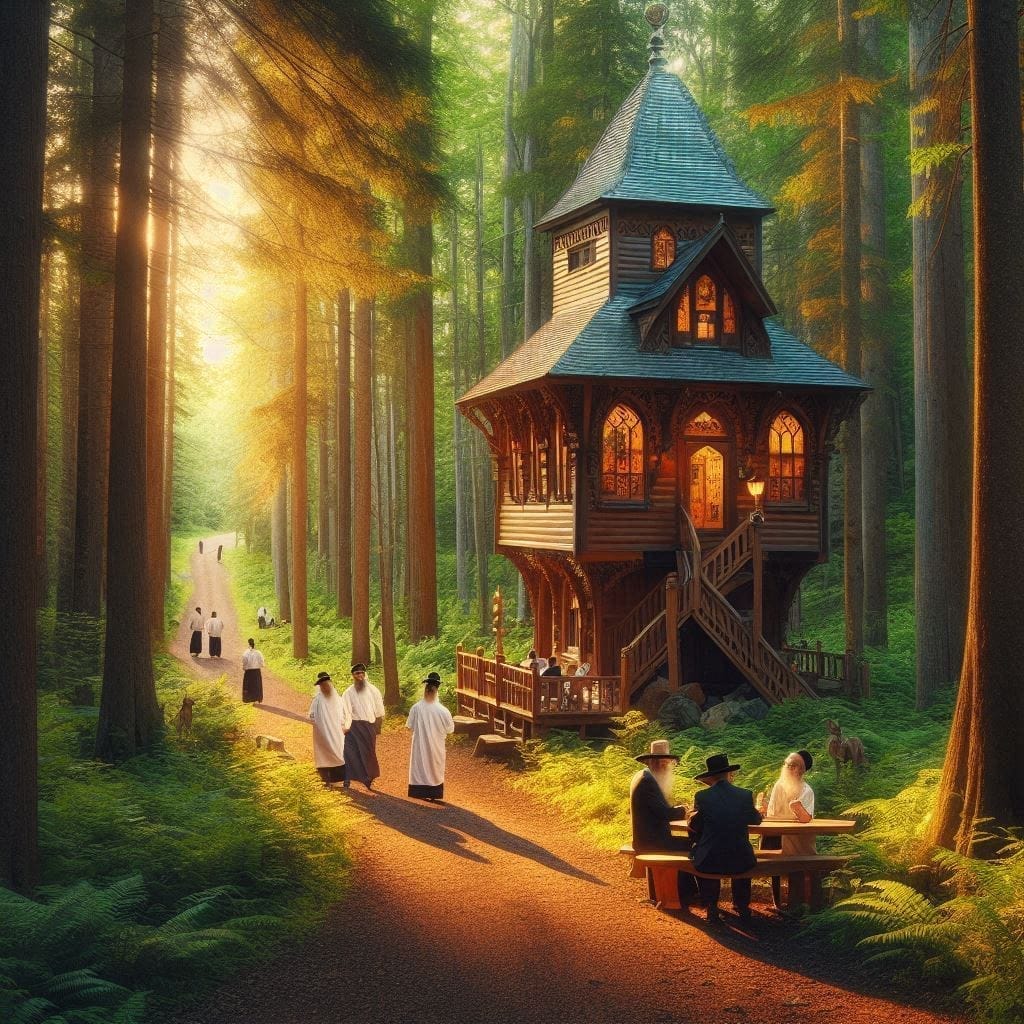
Tu B’Av on the Foothills of Elul
B"H
Introduction: The Hidden Mountain Path
The Jewish calendar is not a flat map of holidays and fasts, but a living terrain — a spiritual landscape with valleys of mourning, peaks of joy, and sacred paths that connect the soul’s deepest memories to its highest yearnings.
Among these paths is a hidden ascent that begins not with the sound of the shofar in Elul, but earlier — in the soft turning of Tu B’Av, the 15th of Av.
Tu B’Av is often misunderstood as a minor or romantic holiday — a sort of Jewish Valentine’s Day — but in truth, it holds a far more profound spiritual weight. It is the first flicker of light after the long darkness of the Three Weeks and Tisha B’Av, a moment of reversal so deep that Chazal considered it one of the two happiest days in the Jewish year (Mishnah Ta’anit 4:8), along with Yom Kippur.
But Tu B’Av is not a destination. It is a beginning. A gentle incline. It is the foothills of Elul.

Part I: The Descent Before the Ascent – 17 Tammuz to 9 Av
To understand Tu B’Av’s elevation, we must trace the descent that precedes it.
1. The Breach – 17 Tammuz
The 17th of Tammuz marks the first crack in the wall — both physically and spiritually. The walls of Jerusalem were breached. The daily Tamid offering ceased. Moshe shattered the first Tablets upon seeing the Golden Calf. Each of these events represents a rupture — a loss of continuity, of covenant, of center.
From that moment begins a downward spiral — the Three Weeks (Bein HaMetzarim), culminating in the deepest wound of all: Tisha B’Av, the 9th of Av.
2. The Abyss – Tisha B’Av
Tisha B’Av is not merely about destruction — it is about the loss of spiritual intimacy with Hashem. The Temple, which Chazal call “the place where heaven and earth kiss,” is torn down. Prophecy ceases. The Shechinah goes into exile. Klal Yisrael, both collectively and individually, enters a state of distance — of silence, abandonment, grief.
Yet within the pain of Tisha B’Av lies a hidden truth: that destruction makes space for rebuilding, and absence awakens longing.

Part II: The Reversal Begins – Tu B’Av as the Turning Point
Tu B’Av falls six days after Tisha B’Av. Yet spiritually, it is its mirror.
1. The Full Moon in the Month of Mourning
Av is the darkest month — yet on the 15th, the moon is full. This is no accident. The full moon of Tu B’Av is like a hidden lamp igniting from within the ashes of the churban. It represents hidden mercy — not from above, but from within the wound.
While Tisha B’Av is the day the Temple was burned, Tu B’Av is the day the heart begins to beat again.
2. What Happened on Tu B’Av?
The Mishnah lists several events that took place on Tu B’Av, all of which share a common theme: reconnection.
• The decree that the generation of the wilderness would die ended.
• The tribes were allowed to intermarry again.
• The roadblocks placed by Yeravam to prevent aliyah l’regel were removed.
• The bodies of those massacred at Beitar were finally buried.
• A day of matchmaking and dancing — when women would go out dressed in white, and men would seek their brides.
Each event marks a reversal of disconnection, a softening of Divine distance, and a rekindling of love — between Hashem and His people, between tribes, between individuals.
Tu B’Av is the first time the soul feels safe enough to love again.

Part III: Nachamu, Nachamu – The Voice of Comfort
Tu B’Av is immediately followed by Shabbat Nachamu, the Shabbat after Tisha B’Av, when we begin reading the Shivah D’Nechemta — the Seven Haftarot of Consolation from Sefer Yeshayahu.
The first words are:
“נַחֲמוּ נַחֲמוּ עַמִּי יֹאמַר אֱ-לֹהֵיכֶם”
“Comfort, comfort My people,” says your God. (Isaiah 40:1)
The double phrase “נַחֲמוּ נַחֲמוּ” is no coincidence. Chazal explain that the doubling reflects a double wound — the destruction of the First Temple and the Second — and thus requires double comfort.
But there is more: The doubling is also intimacy. When a lover speaks softly twice, it is not redundancy — it is closeness. Reassurance. A Divine whisper that enters the soul’s deepest pain.
Shabbat Nachamu is not a command to be comforted. It is a Divine act of comforting. Hashem is not far. He is near. And He is calling.
Tu B’Av awakens the heart. Shabbat Nachamu gives it a voice.

Part IV: Tu B’Av as the Foothills of Elul
Elul is a spiritual mountain — a month of teshuvah, preparation, and soul-return. But mountains are not climbed all at once.
Every mountain begins with foothills — gentle inclines that prepare the climber’s body and spirit.
1. Elul is Not the Beginning — Tu B’Av Is
Tu B’Av is not repentance — it is readiness for it. It is not the cry of Selichot — it is the first exhale after mourning. The sigh that says: Maybe I can come home.
In the emotional language of the soul:
• Tisha B’Av is “I have lost everything.”
• Tu B’Av is “But I am still here.”
• Shabbat Nachamu is “You are still loved.”
• Elul is “I want to come back.”
2. The “Foothills” Are Important
Halachically, the days between 15 Av and Rosh Chodesh Elul are unremarkable. But spiritually, they are the transition zone.
They are the time to:
• Re-enter joy after mourning.
• Rebuild broken relationships.
• Gently re-approach Hashem.
Rebbe Nachman teaches that the beginning of Teshuvah is not confession — it is hope. Tu B’Av is hope. Shabbat Nachamu is comfort. Together they form the first stones on the path back to the King.

Part V: The Rare Convergence – Tu B’Av and Shabbat Nachamu Alike
In 2025, Tu B’Av and Shabbat Nachamu fall on the same day — Shabbat, August 9.
This is an extraordinarily rare and rich convergence.
1. Love and Comfort Meet
Tu B’Av represents our awakening of love. Shabbat Nachamu is Hashem’s response with comfort.
This Shabbat becomes the sacred meeting place of the
Beloved and the Lover, echoing Shir HaShirim:
“I am my Beloved’s, and my Beloved is mine” (Song of Songs 6:3)
The love is mutual. The comfort is complete. The turning is real.
2. Practical Spiritual Opportunity
On this day, we should not treat Tu B’Av or Nachamu lightly.
• Read the haftarah with deep intention.
• Reflect on broken relationships that can be healed.
• Spend time in nature — the vineyards of the Mishnah, or your own trees and grasses — as a place of renewal.
• Begin preparing your inner self for Elul: journaling, small acts of teshuvah, or softening of heart.
This is the Shabbat when God and Israel speak again.

Part VI: The Mountain Awaits — Preparing for Elul
After Tu B’Av and Shabbat Nachamu, the terrain changes.
Elul is coming — the month when the King is in the field, when the soul begins its return in earnest.
But that return is not sudden.
Just as no one wakes from a deep sleep and sprints up a mountain, the soul must acclimate. It must learn to breathe the thinner air of holiness again. Tu B’Av is that breath. Shabbat Nachamu is that warmth.
Elul requires:
• Courage to look inward.
• Willingness to change.
• Faith that one is worthy of return.
Tu B’Av gives you that courage. Shabbat Nachamu gives you that faith.

Conclusion: The Path of Love and Return
In a world that teaches us to associate religion with pressure, deadlines, and guilt, the deeper Torah path is revealed in this journey from 17 Tammuz to Elul.
There is no jump from destruction to repentance.
There is a path:
1. From the breach (17 Tammuz),
2. To the mourning (Tisha B’Av),
3. To the awakening (Tu B’Av),
4. To the Divine whisper (Nachamu),
5. And finally to the climb (Elul).
Tu B’Av on the Foothills of Elul is your invitation to begin. Not to leap. Not to transform overnight. But to begin. To trust again. To return again.
“The Temple was destroyed. But your heart was not.
The covenant was broken. But love was not.
The voice was silent. But now it speaks again:
Nachamu, nachamu ami. Come back. I am waiting.”

Subscribe now.
Sign up for our newsletter to get the most interesting stories of the day straight to your inbox before everyone else
Created with © systeme.io • Privacy policy • Terms of service


